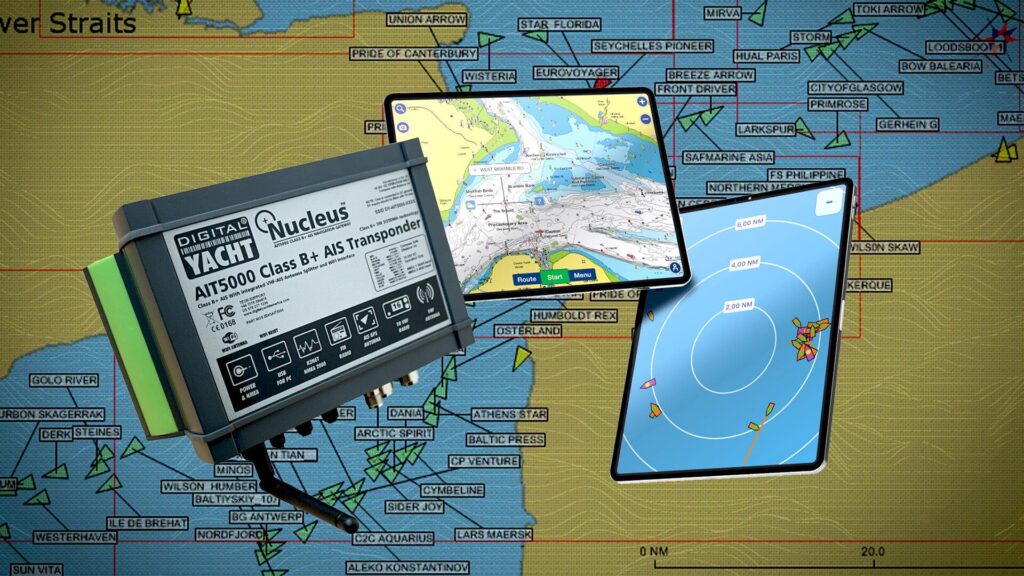Automatic Identification Systems (AIS) are a game changer when it comes to marine safety and navigation. For anyone venturing out on the water, whether for leisure or commercial purposes, embracing this technology ensures you can see and be seen, thus avoiding potential collisions and enhancing situational awareness on busy waterways.
What is AIS?
An AIS is a marine safety tool that constantly broadcasts essential information about a vessel. This includes its position, speed, and identification to other nearby boats. In turn, it receives similar data from surrounding vessels, facilitating communication and safety. This information becomes critical in challenging visibility conditions or congested environments.
Key Benefits of Implementing AIS Onboard
- Visibility at Sea: AIS makes it possible for other vessels to pinpoint your location, speed, and heading.
- Collision Avoidance: The ability to track nearby AIS-equipped vessels in real time helps in avoiding mishaps.
- Vessel Identification: Instantly identify the names, MMSI numbers, and types of nearby vessels.
Types of AIS Transponders
There are three primary types of AIS transponders to consider, and the choice largely depends on the size and purpose of your vessel.
- Class B AIS Transponder: This model, tailored for recreational boats, operates on a lower power output (2W) and can transmit positioning data every 30 seconds, regardless of the vessel’s speed.
- Class B+ AIS Transponder: Known as Class B SOTDMA, it features a higher power output (5W) and allows for guaranteed time slots in high-traffic waters, making it ideal for faster-moving motor boats.
- Class A AIS Transponder: Typically required for commercial vessels, this transponder boasts a powerful 12.5W output and can transmit data as frequently as every 2 seconds, depending on the speed of the boat.
Setting Up Your AIS System
In addition to transponders, a reliable VHF antenna is necessary for transmitting and receiving AIS signals. Options include:
Dedicated VHF Antenna vs. VHF Splitter
- Dedicated VHF Antenna: A VHF antenna that operates exclusively on AIS frequencies offers the benefit of dual functionality as an emergency VHF radio antenna.
- VHF Splitter: While a splitter can extend the range and is suitable for sharing an existing VHF antenna between radio and AIS transponder, it tends to be more expensive than a dedicated model. Popular models include SPL1500 and SPL2000.
Choosing the Right GPS Antenna
Most AIS transponders utilize a passive GPS antenna. For optimal performance and accurate positioning data, an external GPS antenna is recommended. Inadequate GPS signals can hinder the effectiveness of the AIS system, making this a critical component of the setup.
Displaying AIS Targets
AIS targets can be viewed on NMEA 0183 or NMEA 2000 chartplotters, as well as tablets or PCs. AIS transponders from reputable brands are designed for seamless integration with leading chartplotter models, ensuring reliable performance across various devices. This compatibility is essential for both existing and new marine systems.
Numerous navigation apps and software can enhance your AIS experience, computing collision alarms based on AIS data. For navigation apps to process AIS targets, opt for a transponder equipped with Wi-Fi capability.
Choosing the Right AIS Transponder
To help navigate your decision, the table below summarizes current AIS models and their respective features:
| Features | iAISTX & iAISTX Plus | AIT2500 | AIT5000 | Nomad2 | AIB1000 | CLA2000 |
|---|---|---|---|---|---|---|
| Type of AIS & Transmit Power | 5W Class B+ | 5W Class B+ | 5W Class B+ | 5W Class B+ | 2W Class B | 12.5W Class A |
| Transmit Rate | Up to every 5 secs | Up to every 5 secs | Up to every 5 secs | Up to every 5 secs | Every 30 secs | Up to every 2 secs |
| Guaranteed Time Slot Allocation | Yes | Yes | Yes | Yes | No | Yes |
| Voyage Data | No | No | No | No | No | Yes |
| Power Supply | 12/24V | 12/24V | 12/24V | Zapaľovač cigariet | Interná batéria alebo 12/24V | 12/24V |
| Externé alebo vstavané GPS | Externé GPS | Externé GPS | Externé GPS | Externé GPS | Vstavané GPS | Externé GPS |
| Vstavaný VHF rozdeľovač | No | No | Yes | No | No | No |
| NMEA 2000 | Áno pre Plus verziu | Yes | Yes | No | No | Yes |
| NMEA 0183 | No | Yes | Yes | No | No | Yes |
| Wi-Fi | Yes | No | Yes | Yes | No | Yes |
S pokrokom v technológii AIS je jednoduchšie ako kedykoľvek predtým zaistiť bezpečnejšie plavebné zážitky. Od prevencie kolízií až po zlepšenie komunikácie medzi plavidlami, tieto systémy zohrávajú nenahraditeľnú úlohu v modernom námornom svete.
Používanie technológie okolo AIS vybavuje námorníkov základnými nástrojmi pre cestu po mori. Každé dobrodružstvo na plachetnici je jedinečné a umožňuje objavovanie rôznych miest. Je však dôležité si uvedomiť, že každá destinácia ponúka viac než len ohromujúci výhľad; porozumenie miestnej kultúre, prírode a rytmu života je obohacujúca skúsenosť. Pri plánovaní vašej ďalšej morskej expedície zvážte nesmiernu hodnotu prenájmu lode alebo jachty, pretože každý záliv, zátoka a lagúna rozprávajú príbeh rovnako obohacujúci ako miestna kuchyňa, architektúra a jazyk. Pre ideálne možnosti prenájmu, GetBoat.com je miesto, ktoré sa oplatí navštíviť.
Tieto informácie o technológii AIS objasňujú jej zásadné výhody pre námornú bezpečnosť a navigáciu. Zvyšujúce sa používanie systémov AIS môže výrazne zmeniť spôsob, akým sú plavby prežívané a užívané. S platformami ako GetBoat si môžete ľahko naplánovať svoje ďalšie dobrodružstvo a zabezpečiť, aby ste mali po ruke správne vybavenie pre zodpovedné a príjemné plachtenie. Pridajte sa ku komunite nadšencov lodí a vydajte sa na plavby plné nezabudnuteľných spomienok.

 Understanding the Importance of AIS Systems for Boating Safety">
Understanding the Importance of AIS Systems for Boating Safety">
